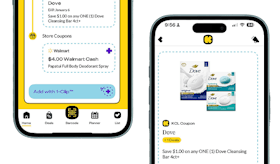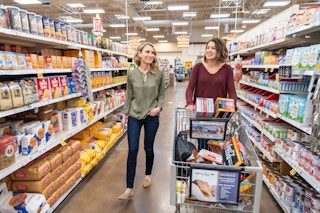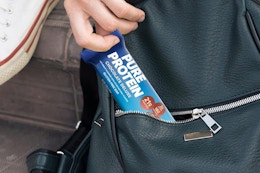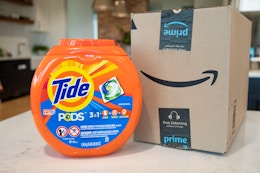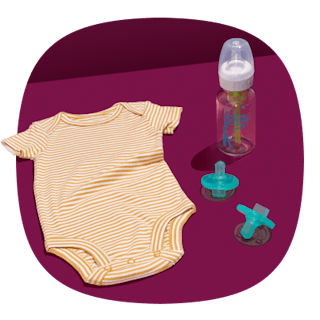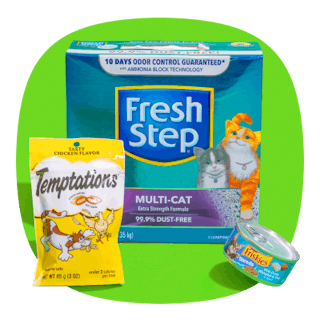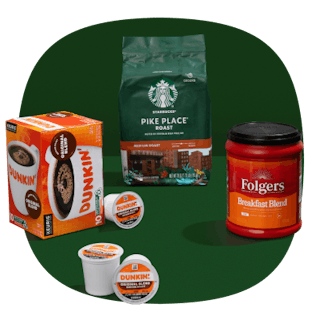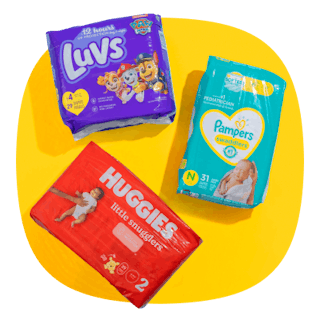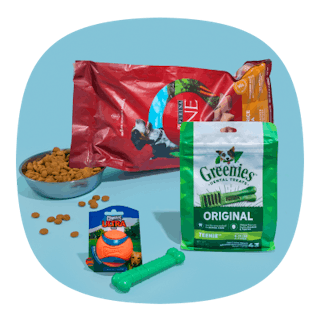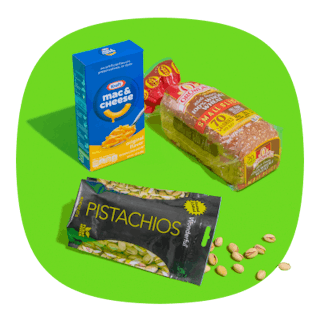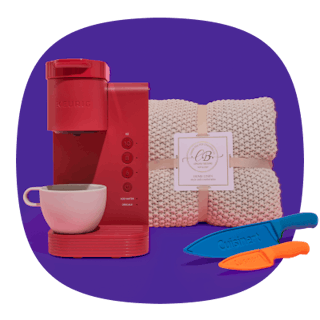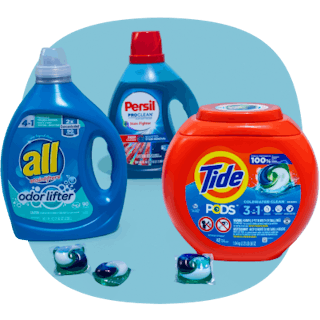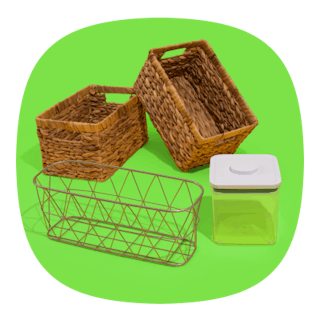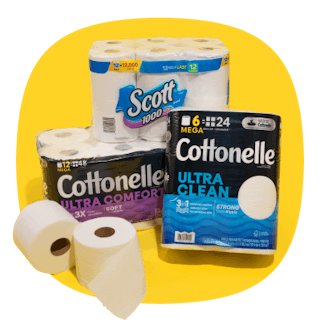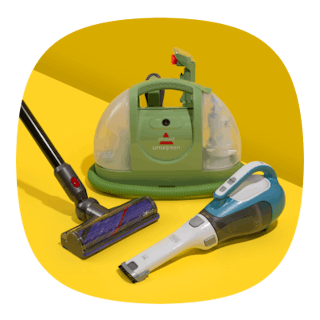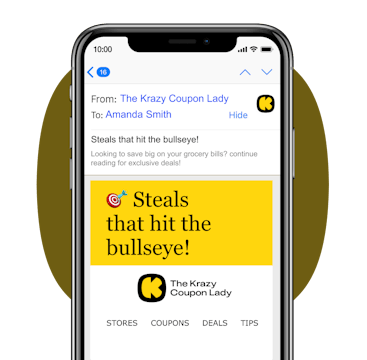It’s tricky enough figuring out how to save money on groceries generally. Throw in the highest rate of inflation in 40 years, and it can feel pretty defeating. According to the U.S. Consumer Price Index, the cost of food at home jumped 6.5% in 2022, with some food categories seeing larger increases. Meat, for example, jumped 7.7% over the year, while dairy products are up 15.3%, and bakery and cereal products rose 16.1%. We need cheap milk and we need it now.
But you don’t have to panic; while saving money on groceries isn’t as easy as it used to be, it’s still totally possible. I’m going to give you some tips on ways to save without busting out the scissors or printing a single coupon.
Before we get started, download the KCL app, and you’ll get access to all our deals. We even tag them with “no coupon needed” to make it nice and easy.
1. Make a budget grocery list — wandering aimlessly will cost you extra.
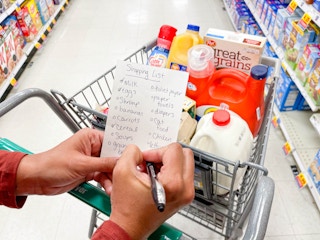
The grocery store wants you to wander around and grab whatever catches your eye, but those impulse buys add up! Pre-pandemic, the average shopper spent more than $155 a month on impulse buys.
Before you set foot in the grocery store, you need to create a budget grocery list. Determine your budget, and then start adding what you need for meals, snacks, and kitchen/pantry staples.
When you come in with a list, studies show that you’ll avoid those pesky impulse buys. “Fast and efficient” shoppers were reported to be 82% less likely to impulse buy than the average shopper. When it comes to how to save on groceries, this is one of the easiest tricks.
TIP: Another great way to stick to your shopping list is to place a delivery or pickup order at your grocery store. You’ll be able to select the products you want and check out with minimal temptation to impulse buy.
2. Join grocery store reward programs to automatically save money.
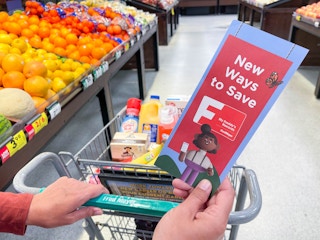
If you haven’t signed up for your grocery stores’ loyalty programs, you’re leaving money on the table. These free programs offer members-only pricing that translates into coupon-like savings.
There are multiple free store loyalty programs to join . Here’s a quick list of the top three you should join (if they’re in your area):
Kroger Plus Shopper’s Card
The Kroger Plus Shopper’s Card makes it easy to coupon at Kroger (and all of their sister grocery stores) without clipping a single coupon. You’ll have access to store and manufacturer coupons as well as personalized offers right in your account. Digital coupons are valid up to five times in a single transaction, which is awesome.
Target Circle
If you’re a Target shopper and not using Target Circle, you’re missing out! You can “clip” digital manufacturer coupons and store coupons. They can be stacked with sales and rebate offers too. New offers come out daily, but a big chunk become available on Sunday with the new sale ad. There are tons of Target Circle insider secrets, too.
Harris Teeter e-VIC
With Harris Teeter e-VIC, you’ll be able to link manufacturer coupons directly to your card, get personalized offers every Wednesday and Friday, and participate in promotions and sweepstakes.
3. Easily get back money on your grocery purchases with rebate and cash-back apps.

Sometimes you save money before you hit the checkout line, and sometimes you save afterward. Rebate and cash-back apps, like Ibotta, Fetch, and Coupons.com, let you get back some of what you spent on groceries, inflation or not.
While each app is a little different, they all require you to preselect rebate offers before you shop. Then you scan your receipts (or link to your store’s loyalty card) to get the rebates. You cash out once you’ve hit a certain threshold.
If using rebate and cash-back apps overwhelms you, we have the Ultimate Guide to Rebate & Cash-Back Apps , which will walk you through the best apps to get you the most money.
4. Shop for heavy and uncommon groceries on Amazon to save.
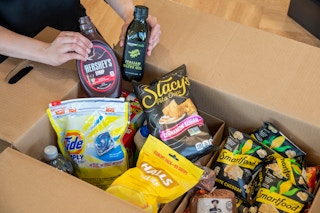
It’s no surprise that when it comes to how to save on groceries, Amazon is ready to be the hero. Amazon is also a great resource for any food item not commonly found in a grocery store, like coconut flour. Some of these items can easily be found at health food stores but are often much more expensive than buying from Amazon online.
Just be sure to always compare prices first (the unit price, specifically). Plus, it’s way more convenient to have Amazon bring heavy items to your door.
Related: Check out Amazon Prime Pantry for more ways to save.
5. Follow the sales — even if they lead you to multiple stores.
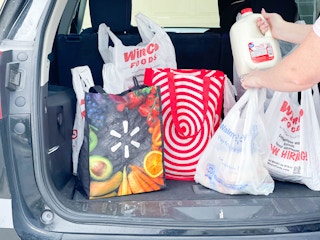
There’s a seasonality to sales. Certain items always go on sale at the same time every year. Over time, and with KCL’s help, you’ll learn when’s the best time to buy items each month and when to stock up on things .
Pay attention to your stores’ weekly ads (available online) and the Sunday paper inserts. Many times when items are on sale, you can get the name brand for cheaper than the store brand. Just remember to check the unit price to make sure.
You can take advantage of multiple sales when shopping at multiple stores, especially discount grocery stores and some other unexpected places . I spread out my grocery shopping between Publix, Aldi, Costco, and Amazon. This allows me to take advantage of all four stores’ best prices without overspending. Certain items are always going to be more expensive at Publix than at Aldi, so I don’t buy them there.
6. Buy in bulk and split what you get with a friend or family member.
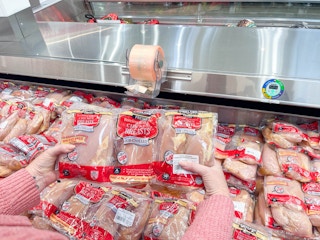
Purchase big packages of meat, fish, and poultry at warehouse stores like Costco, BJ’s, or Sam’s Club rather than in smaller quantities at the grocery store. Buying these items in a bulk pack or “family pack” is cheaper per ounce than buying smaller-sized packages in the grocery store.
Chicken breast at Costco in my area is $3.99 per pound. At our local grocery store, it’s $4.29 per pound. On rare occasions, they’ll put chicken breasts on sale for buy one get one free.
Check out all the stock-up prices here .
7. Check unit prices per ounce to avoid overpaying.
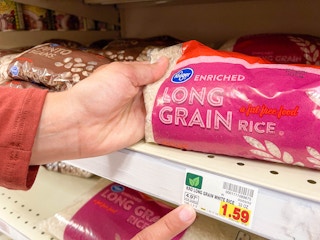
Despite the bulk tip above, bigger isn’t always better. When checking unit prices, don’t just compare different brands; you should also compare different sizes of the same brand. While buying a bigger package often costs less per unit, that’s not always the case.
To calculate the unit price, simply divide the cost of the product by the quantity you’re receiving or check the store’s shelf label.
8. Save an average of 25% by NOT being brand loyal.
Store-brand items like canned vegetables, cat food, and paper products often use the same recipe and ingredients as name-brand products. Sometimes the generic brand even tastes better! I tested my friends and family on generic versus name-brand product taste, and you may be surprised at the results: Name-Brand vs. Generic Face-Offs: Best & Worst Revealed .
There are a lot of store-brand products made by the name-brand manufacturer . Costco Kirkland batteries are the same as Duracell; Kirkland Signature coffee is made by Starbucks; Kroger American cheese is made by Kraft; and Great Value whipped cream is made by Cool Whip. Buying these generic brands versus the name brand will save you money when you don’t have a coupon.
One of the most important things to know when learning how to save on groceries is to buy the generic brand, especially for these products:
-
Food staples. Your basics like flour, sugar, cooking oil, and butter will always taste (and work) the same regardless of what the label says.
-
Canned produce. Any basic canned fruit or vegetable will taste the same in a generic-brand can.
-
Frozen produce. Name-brand frozen produce typically costs twice as much as the generic version, and the store brand often gives you more per bag.
9. Get cheap groceries delivered for free to save on gas.
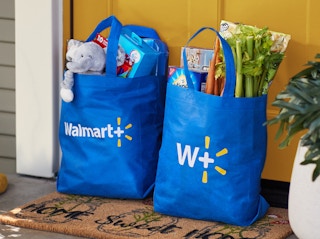
via Walmart
Most people in the U.S. live between two to three miles from a supermarket, and they make 1.6 trips to the store per week. Since cars average around 25 miles per gallon and gas costs $3.30 per gallon (or more depending where you live), you’re spending about $5 a month just in gas to go to the store.
There are lots of grocery delivery services out there who’ll offer you free delivery on your first orders or a free month of deliveries. Our favorite is Walmart Plus , which offers 30 days of free delivery (plus the same prices as in store). And we also like how you can coupon with Instacart . But even after you’ve exhausted all the free deliveries, the monthly fees will be really close to the amount you’d have spent on gas.
We have a great list of free grocery delivery service promos you should check out.
10. Pay for your groceries with cash to stay on budget.
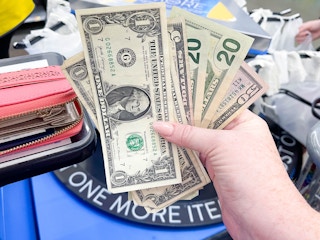
Remember that budget we made? Pull out the budget as cash. You can set aside a specific amount of money for groceries at the beginning of the month and stash it away in an envelope.
Then as the month progresses, simply spend your grocery budget until it’s gone. It’s as simple as that. No overspending, and it forces you to consciously consider what you’re buying. This is incredibly effective when learning how to save on groceries.
11. Buy what’s in season to avoid paying premium prices.
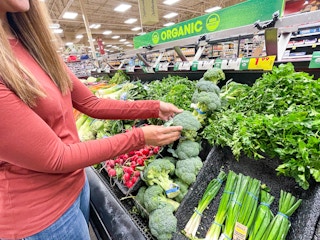
Buy berries in the summertime, apples in the fall, citrus in the winter, and cherries in the spring. When you buy seasonal produce that’s on sale, stock up! You can easily preserve them by freezing extras or canning them yourself. That way, when their season is over and the prices go up, you already have the best price stored in your freezer or on your shelf.
To save even more on in-season produce, shop at a farmers’ market. The prices are usually cheaper, and you’ll be helping a local farmer out. For more, check out these tips for buying inexpensive produce .
Here’s what’s in season each month:
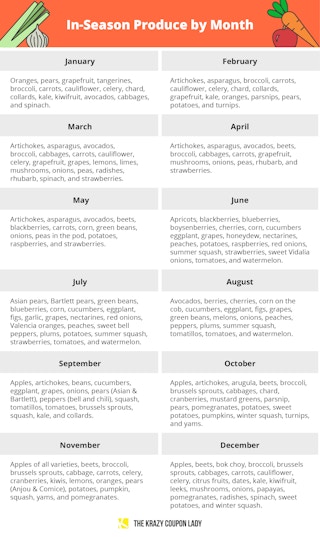
Get the free printable version of this table showing In-Season Produce by Month.
12. Regrow new vegetables and herbs from your kitchen scraps.

Skip the grocery store altogether and shop from your own garden. How’s that for learning how to save on groceries?! You can regrow vegetables like green onions, onions, celery, and potatoes.
-
Green onions: Keep the white root ends of store-bought green onions, and stick the root end into a glass with an inch or two of water. Place in a sunny window, and within a day or two, you’ll see green shoots starting to grow.
-
Onions: Cut off the root end of the onion, leaving about half an inch connected to the root for the best results. Plant it in a sunny spot with a layer of soil covering it. Keep the soil moist, and make sure the environment is warm.
-
Celery: When you get a bunch of celery, cut off the individual stalks, leaving the root end connected with an inch or so of each stalk left. Place that root in a shallow bowl with water covering just the roots (use toothpicks to prop it up if needed). Put it on a sunny windowsill and spray the tops with water occasionally. In a few days, leaves will start to sprout, and after about a week, transplant it to a pot with the leaves above the soil level. A whole new head of celery will appear in a few weeks.
-
Potatoes: Leave a potato out until it grows numerous small sprouts or “eyes.” Cube it into 2-inch pieces (each piece should have at least a sprout or two), and leave them out for a couple of days. Plant them around four inches below soil level with the sprouts facing up. As the roots appear, add more soil.
Once you get your scraps growing, you can then build cheap raised gardens .
If regrowing veggies isn’t your thing, purchase herbs and plants at places like Walmart, Home Depot, and Lowe’s for cheap! I found basil for only $2 at Walmart and a tomato plant for only $3.
13. Don’t buy prepared foods that cost 40% more.
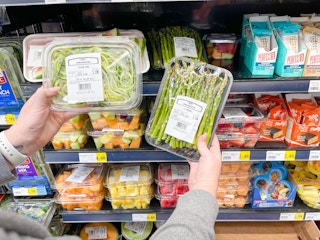
Yes, it’s convenient to buy pre-cut fruits and veggies or pre-made sandwiches, but it’s also more expensive. These convenience items could be marked up as much as 40%. And that’s especially painful in light of inflation.
Instead, buy the ingredients separately and spend an hour on the weekend washing and chopping vegetables. The same goes for grated cheese. You get about 50% more cheese by purchasing a block and grating it yourself versus buying pre-shredded cheese. Plus, you can freeze your cheese .
14. Buy frozen fish and seafood and save up to 40%.
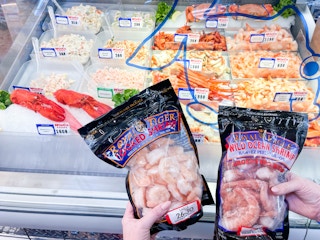
Fish and seafood prices rose 9.8% in 2022, so if you’re craving it, you’ve gotta be crafty in store. Ask the person behind the seafood counter, or read the fine print on the “fresh seafood” signs. Almost always, their fresh seafood was previously frozen.
Like frozen produce, fish is frozen at its peak freshness, so you can expect a quality product. Buying frozen fish will save you about 40%, plus, you won’t feel pressured to cook the fish within two days of bringing it home.
At Publix, the frozen bags of shrimp are the exact same shrimp in the display case. In fact, the seafood department told me they just thaw those bags for the case. How crazy is that?!
15. Ask department managers when they do markdowns.

Insiders know how to save on groceries better than anyone. Here’s what I’ve learned from them: stores usually have markdowns in three different locations — in the produce section, in the meat section, and in a grocery cart or shelf near the back of the store. You’re going to want to get there early in the day because people snatch up these markdowns quickly now that meat prices have skyrocketed.
Also, don’t shy away from the large packages of clearance meat. Remember, you can break the large packages down into 1-pound portions, put them in zip-locking freezer bags, and store them in your freezer.
Download the KCL app to add and redeem coupons in store
